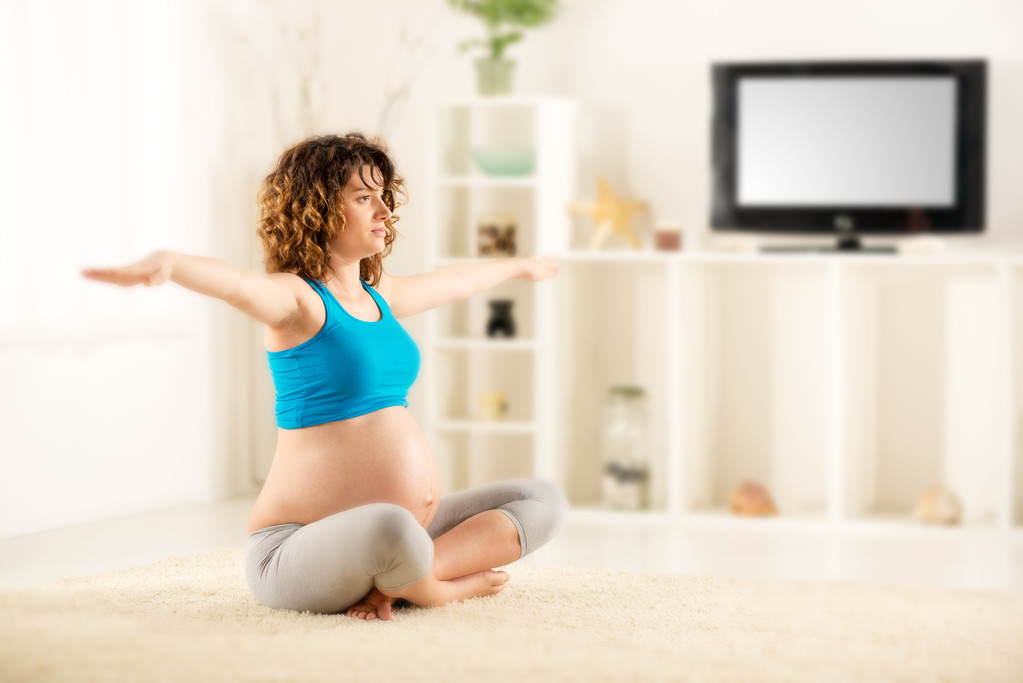Discover safe and effective exercises to stay active during your third trimester of pregnancy.
What Exercises Are Safe During the Third Trimester of Pregnancy?
Congratulations on reaching the third trimester of your pregnancy! As you prepare to welcome your little one into the world, it’s essential to prioritize your physical and mental well-being. And what better way to do that than through exercise? In this article, we’ll explore the importance of exercising during the third trimester, the types of safe exercises you can enjoy, precautions to take, and the benefits of working with healthcare professionals. So, let’s dive in and find out what exercises are safe during this exciting stage of pregnancy!

Understanding the Importance of Exercise in the Third Trimester
Exercise plays a vital role in promoting overall wellness during pregnancy, especially in the third trimester. It can help boost your mood, maintain a healthy weight, reduce discomfort, and prepare your body for childbirth. Engaging in regular physical activity can also enhance your stamina, making it easier for you to keep up with the demands of motherhood once your little bundle of joy arrives.
During the third trimester, your body goes through significant changes to accommodate the growing baby. Your uterus expands, putting pressure on your organs and causing discomfort. Exercise can help alleviate some of these discomforts by strengthening your muscles and improving your posture. It can also help improve your circulation, reducing the risk of swelling and varicose veins.
One of the key benefits of exercise during pregnancy is its positive impact on mental health. Pregnancy can bring about a range of emotions, from excitement to anxiety. Regular physical activity releases endorphins, which are known as “feel-good” hormones. These endorphins can help reduce stress, improve sleep, and boost your overall mood.
The Role of Exercise in Pregnancy
Exercise during pregnancy has numerous benefits, including improved circulation and cardiovascular health, increased energy levels, and reduced risk of gestational diabetes and high blood pressure. Furthermore, staying active can help alleviate common pregnancy discomforts such as backaches, swollen ankles, and constipation. Remember, it’s always important to consult your healthcare provider before starting any exercise routine.
When it comes to exercise in the third trimester, it’s important to choose activities that are safe and suitable for your changing body. Low-impact exercises such as walking, swimming, and prenatal yoga are highly recommended. These activities provide gentle cardiovascular exercise while minimizing stress on your joints.
Strength training exercises that target the major muscle groups can also be beneficial. However, it’s essential to use proper form and avoid heavy weights or exercises that put excessive strain on your abdomen. Prenatal fitness classes or working with a certified prenatal exercise specialist can help ensure you are performing exercises correctly and safely.
Safety Considerations for Third Trimester Exercise
While exercise is generally safe throughout pregnancy, there are a few precautions to keep in mind during the third trimester. Firstly, listen to your body and modify your routine as needed. Avoid exercises that involve lying flat on your back for extended periods, as this can compress major blood vessels. Instead, opt for exercises in a reclined or elevated position to maintain proper blood flow.
Additionally, steer clear of activities with a high risk of falling or injury, such as contact sports or intense jumping exercises. As your center of gravity shifts during pregnancy, your balance may be compromised, making you more susceptible to falls. Choose exercises that are stable and have a low risk of impact or injury.
It’s also important to stay hydrated and wear comfortable, supportive clothing and footwear. As your body temperature rises during exercise, it’s crucial to avoid overheating. Take breaks as needed and listen to your body’s cues.
In conclusion, exercise in the third trimester of pregnancy is highly beneficial for both the mother and the baby. It can help improve physical and mental well-being, reduce discomfort, and prepare the body for childbirth. By choosing safe and appropriate exercises, consulting with your healthcare provider, and listening to your body, you can enjoy the many benefits of staying active during this important stage of pregnancy.
Types of Safe Exercises for the Third Trimester
Luckily, there are plenty of safe and enjoyable exercises you can engage in during the third trimester of pregnancy. Here are a few options to consider:
Benefits of Prenatal Yoga
Prenatal yoga combines gentle stretching, deep breathing, and relaxation techniques, making it an ideal exercise for expectant mothers. It helps improve flexibility, strength, and balance, while also reducing stress and promoting relaxation. Many yoga studios offer specifically designed prenatal classes, but you can also find online resources to guide you through your practice.
During prenatal yoga, you will learn various poses that are modified to accommodate your growing belly. These poses can help alleviate common pregnancy discomforts such as back pain, swollen ankles, and tight hips. Additionally, prenatal yoga classes often incorporate meditation and mindfulness exercises, which can help you connect with your body and baby on a deeper level.

Walking for Wellness in Pregnancy
Walking is a fantastic low-impact exercise that can be easily incorporated into your daily routine. It helps maintain cardiovascular fitness, strengthens your muscles, and aids in digestion and circulation. Grab a supportive pair of shoes and take a leisurely stroll in your neighborhood or a nearby park – it’s a wonderful way to connect with nature and keep your body moving!
Not only does walking provide physical benefits, but it also offers mental and emotional benefits. Taking a walk outdoors can help clear your mind, reduce stress, and boost your mood. It’s a great opportunity to enjoy some fresh air and soak in the beauty of your surroundings.
Strength Training for Expectant Mothers
Strength training, using light weights or resistance bands, can help you maintain muscle tone and prepare for the physical demands of labor and delivery. Focus on exercises that target your major muscle groups, such as squats, lunges, bicep curls, and shoulder presses. Always use proper form and avoid heavy weights to prevent strain on your joints.
Engaging in strength training during pregnancy can have numerous benefits. It can help improve your posture and reduce common pregnancy discomforts like lower back pain. Additionally, building strength in your muscles can enhance your overall stamina and make it easier to perform daily tasks as your pregnancy progresses. Remember to listen to your body and consult with your healthcare provider before starting any new exercise routine.
Precautions to Take When Exercising in the Third Trimester
During the third trimester, it is imperative to pay close attention to your body and make appropriate adjustments to your exercise routine. Here are some precautions to keep in mind:
Listening to Your Body
Each woman’s pregnancy journey is unique, so it’s essential to listen to your body’s cues. If an exercise feels uncomfortable or causes pain, modify or discontinue it. Remember, your body is working hard to nourish and grow your baby, so be gentle with yourself and prioritize your well-being.
When exercising in the third trimester, it’s important to be aware of the changes happening in your body. As your baby continues to grow, your center of gravity shifts, which can affect your balance and stability. Take this into consideration when choosing exercises and be mindful of any discomfort or strain you may feel.
Additionally, your ligaments and joints may become more relaxed due to the hormone relaxin, which can increase the risk of injury. Be cautious when performing exercises that involve sudden movements or high impact, such as jumping or running. Opt for low-impact exercises like swimming, prenatal yoga, or stationary cycling to reduce the risk of joint strain or injury.
Hydration and Nutrition During Exercise
Staying properly hydrated is vital during pregnancy, especially when exercising. Drink plenty of water before, during, and after your workout. Dehydration can lead to dizziness, fatigue, and even contractions, so it’s crucial to keep your fluid intake consistent.
When it comes to nutrition, focus on fueling your body with the right nutrients to support both you and your baby. Aim for a balanced diet rich in fruits, vegetables, lean proteins, and whole grains. These foods provide essential vitamins, minerals, and antioxidants that promote overall health and well-being.
Before engaging in any exercise, consider having a small snack to provide you with the necessary energy. Opt for a combination of carbohydrates and protein, such as a banana with nut butter or Greek yogurt with berries. This will help sustain your energy levels throughout your workout.
When to Stop Exercising
If you experience any concerning symptoms during exercise, such as dizziness, vaginal bleeding, chest pain, or contractions, stop exercising immediately and seek medical attention. These symptoms may indicate a more serious issue that requires immediate medical evaluation.
It’s important to consult with your healthcare provider before starting or continuing any exercise routine during pregnancy. They can provide personalized guidance based on your individual circumstances and medical history. Your healthcare provider will also guide you on when it’s safe to resume physical activity if you need to temporarily stop due to any complications or concerns.
Remember, the goal of exercising during pregnancy is to maintain your overall health and well-being, as well as to support the healthy development of your baby. By taking the necessary precautions and listening to your body, you can safely enjoy the benefits of exercise throughout your third trimester.
Consulting with Healthcare Professionals
Discussing Exercise Plans with Your Doctor
Prior to beginning or modifying any exercise routine during pregnancy, it’s crucial to consult your healthcare provider. They will assess your individual situation and provide personalized recommendations based on your health, fitness level, and any specific pregnancy-related conditions or concerns you may have.
Working with a Prenatal Fitness Expert
Another valuable resource during your pregnancy journey is a prenatal fitness expert. These specialists have training and expertise in designing safe and effective exercise programs for expectant mothers. They can guide you through tailored workouts, ensuring that you’re exercising in a way that supports you and your baby’s well-being.
Mental Health Benefits of Exercise During Pregnancy
While exercise is excellent for physical health, it also offers numerous mental health benefits during pregnancy:

Exercise and Stress Reduction
Pregnancy can bring its fair share of stress and anxiety. Regular physical activity releases endorphins, the “feel-good” hormones, which can help reduce stress levels and boost your mood. Whether it’s a relaxing yoga session or a brisk walk, exercise provides a wonderful opportunity to unwind and focus on your own well-being.
Exercise and Improved Sleep
Sleep disturbances can be common during pregnancy, but exercise can play a role in helping you achieve better quality sleep. Engaging in regular physical activity, especially earlier in the day, can help tire your body and promote deeper, more restful sleep at night.
As you embark on your third trimester, remember that exercise is your ally in maintaining physical and mental well-being. By incorporating safe and enjoyable activities, listening to your body, and seeking guidance from healthcare professionals, you can experience a healthy and active pregnancy. Enjoy this special time and embrace the benefits of staying active – you’re nurturing not only yourself but also your precious little one who’s counting down the days until their grand entrance!



